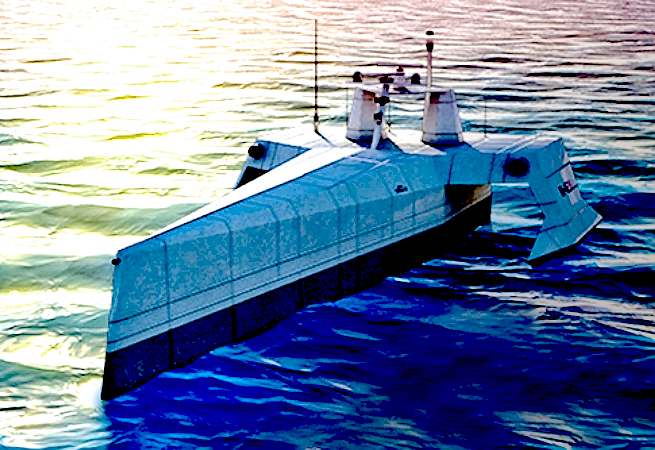
Leidos Starts Building ACTUV - July 9th, 2014
Leidos, a national security, health and engineering solutions company, has begun construction on ACTUV (Autonomous Continuous Trail Unmanned Vessel) under a Defense Advanced Research Project Agency
(DARPA) program for the design, development, and construction of a vessel originally conceived for an
anti-submarine warfare mission.
Leidos is a FORTUNE 500
company. Its subsidiaries have approximately 23,000 employees at locations worldwide.
ACTUV is an autonomous unmanned vessel designed to track quiet
diesel-electric submarines spanning miles of ocean depths for months at a time with minimal human input. It is scheduled to be launched on the Columbia River in 2015.
“ACTUV’s advanced sensor technology should allow for continuous surveillance which, combined with the vessel architecture and design, is expected to provide autonomous
safe navigation supporting Navy missions around the world,” said Leidos Group President, John Fratamico.
ACTUV carries other sensors and mission packages designed to allow it to conduct a variety of Intelligence, Surveillance and Reconnaissance and other alternate missions. With situational sensors that can ensure safe
navigation, the ACTUV
trimaran has electro optics, long range and short range radar.
“A cross-disciplinary Leidos team leveraged insights and innovation from across the organization to develop the concept of the autonomous unmanned vessel. It would help keep our troops out of harm’s way and provide capability in more harsh environmental conditions for a longer period of time,” added Fratamico.
Maritime and hydrodynamic engineers designed the platform, and scientists and experts designed autonomy for safe navigation, status and health reporting, and sensor control and processing. Analytics experts programmed the logic for identifying other vessels and predicting their behavior.
Almost the only thing that justifies the expense and skill needed to operate a naval
submarine is its ability to disappear underwater and operate invisibly. That’s why countering this advantage by locating and tracking enemy submarines even in peacetime is a major job for naval forces around the world. It’s a task so vital, yet so time consuming and expensive, that it once employed almost the entire
Royal Navy during the Cold War, so it’s no wonder that automating sub hunting is a high priority.
Relatively cheap and virtually silent, diesel-electric submarines are quickly becoming one of the biggest threats to naval operations and a $1.8 trillion commercial shipping industry. Detecting and tracking these stealthy subs presents a huge challenge even for the U.S. Navy, the world’s most technologically advanced fleet.
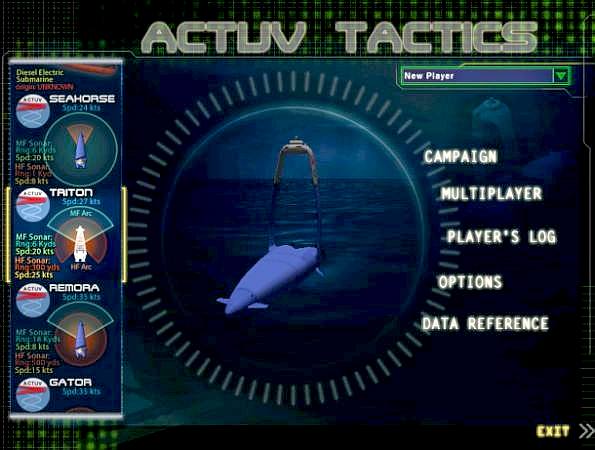
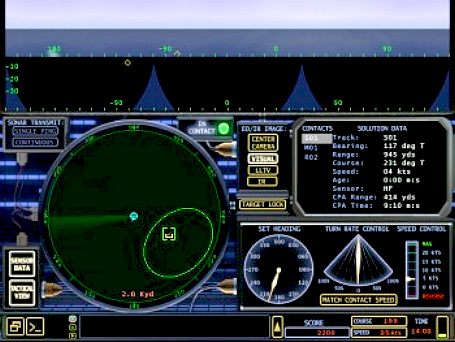
Two
examples of the visual interfaces for computer games. The tactics,
though relatively basic, can be used to refine submarine hunting
software for the real deal.
DARPA
CALL FOR CROWDSOURCE SIMULATION OPERATORS - OPERATION REALITY 2011
The US Defense Advanced Research Projects Agency, which some may recognise as a founding father of the internet, is developing antisubmarine warfare drones and has released a video game hoping to crowdsource some of the tactical AI behind them.
The ACTUV Tactics Simulator, released by DARPA, is a simulator challenging players to “keep track of elusive submarines” in ways that have “never been thought of before”.
“Can you outsmart an enemy submarine commander and keep him from escaping into the deep?” DARPA asks.
Players will be put in charge of the Anti-Submarine Warfare (ASW) Continuous Trail Unmanned Vessel (ACTUV), basically a sub-hunting drone. The submarines they’ll be chasing are working from AI that incorporates “actual evasion techniques” used by real commanders.
It’s more than a cerebral challenge; it appears to feature single- and multiplayer campaigns, and leaderboards. And
it was free, subject to DARPA gaining insight from your experiences.
http://www.kotaku.com.au/2011/04/play-this-submarine-strategy-game-and-help-the-u-s-navy/
DARPA dabbles in all matter of defense drones, and it's no stranger to leveraging the wisdom of the masses to help develop tomorrow's military machinery. The agency's latest program to go the crowdsourcing route is its Anti-submarine Warfare Continuous Trail Unmanned Vessel (ACTUV), and it wants you to help develop the software that'll control the
submarine hunting drone.
DARPA's borrowed a bit of the Sonalysts Combat Simulations Dangerous Waters game to create the ACTUV Tactics Simulator, where players complete missions tracking a target sub while navigating through and around commercial ocean traffic. Would-be captains can then choose to submit their strategies and game data to DARPA for use in shoring up the autonomous seabot's strategic submarine pursuit software. Hit the source link for a free download and dive into the sub-hunting action.
http://www.engadget.com/2011/04/08/download-darpas-sub-hunting-sim-help-train-its-actuv-automaton/
http://www.escapistmagazine.com/tag/view/submarine
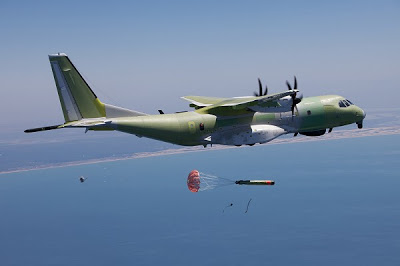
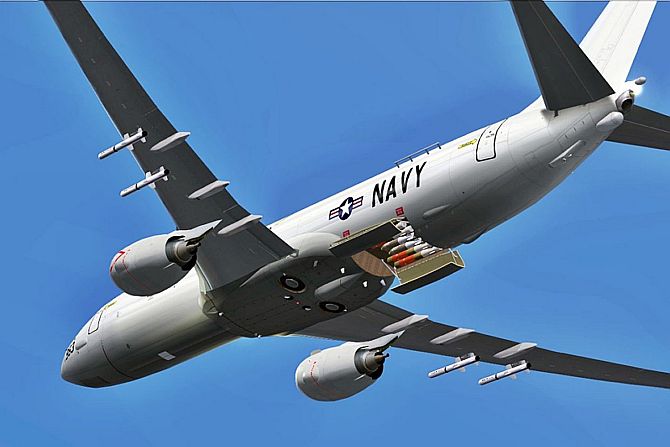
Aircraft
are used to hunt submarines. They are expensive to operate and
temporary. A system like SeaNet
is persistent, with no fuel bill and no rations needed to keep a
powerful fleet at sea with that same destructive power as many
destroyers.
If you think you've got what it takes to hunt enemy submarines prowling the murky depths, the good folks at the Defense Advanced Research Projects
Agency have something they'd like you to try.
Fair warning: the Anti-Submarine Warfare Continuous Trail Unmanned Vessel Tactics Crowdsourced Simulator is strictly for the hardcore. If your idea of a simulator involves anything you can control with a gamepad, just stop here and go read something else. If, on the other hand, you used to have all kinds of fun staring at a screen for 20 minutes waiting for a firing solution to resolve in Red Storm Rising, this is going to be right up your alley.
ACTUV is a DARPA project aimed at creating an unmanned naval vessel, essentially a large, floating sensor suite, that can track and trail enemy submarines with minimal supervision. But while collecting data is easy, figuring out what to do with it is most definitely not. For all practical purposes, submarines are silent and invisible, so hunting them is a matter of interpreting inputs, mostly audio cues, a tricky business in a crowded and noisy ocean.
In order for the autonomous ACTUV system to have a hope against seasoned submariners, it needs the best and most "intelligent" programming possible, which is where gamers come in. DARPA has integrated an ACTUV simulation into the commercially-available Dangerous Waters game and released it as ACTUV Tactics in order to collect and analyze tactics and results and figure out what works and what doesn't.
"As you complete each scenario in the simulation you will be asked if you would like to submit data about your game play to our database for analysis. The data collected doesn't contain any information about you or your computer, or anything else outside of what you did with ACTUV and how well it worked," DARPA explained on the ACTUV website. "Good or bad, please agree to submit your data for analysis so that we can see what tactics work (or don't work!). And you can always say no - installing and playing the simulation does not collect or send any information until you expressly agree to it at the end of each scenario."
It's very hardcore but also surprisingly entertaining. The visuals are dated - Dangerous Waters originally came out in 2006 - but still more than adequate, the controls are about as simple and intuitive as you could expect in such an inherently complex game and the online leaderboard generates some real competition against like-minded gamers. There's even a forum where you can trade tips on how to track sprinting SSKs without passive sonar.
It's obviously not going to be everybody's cup of tea but ACTUV Tactics
are really quite fantastic for fans of naval sims and, being free and relatively small, an easy indulgence for the curious.
On the first tutorial mission one subject wound up so engrossed that by the end
he was speaking orders out loud. A good sign that the game is doing something right.
RED STORM RISING
The Soviet Union, under severe pressure after destruction of one of their biggest oil refineries, must secure a new source of oil, and to do that, they must disable the West... which means they must invade Europe and fight
NATO to a
standstill. The only way NATO can prevent that from happening is to reinforce their forces with convoys from the US and other countries.
You are in command of one of the US attack submarines. You must hold the ocean against the Soviet navy at all costs, or the land battle will go badly. Part submarine simulator, part dynamic campaign, and part WW3 simulation, Red Storm Rising is an amazing look at modern warfare.
NAVAL COMBAT PACK 688, FLEET COMMAND, SUB COMMANDER
688(I) - Hunter/Killer is the most realistic submarine simulation ever developed for PC. Master the sonar and weapons control systems, learn to develop real target situations and outfit your boat with the latest advanced weaponry. Then use your skills to complete the tour of duty and earn your dolphins to become a true submariner.
Fleet Command - International waterways become theaters of war. The world's most formidable maritime powers exchange their fatal blows -- and entire fleets are at your command. Strategically deploy vessels from every class - frigate to aircraft to nuclear submarine - to maintain the precarious balance of naval power and gain position for the deadly endgame.
Sub Command - Puts you in charge of the most deadly modern-day submarines in the world. Play three distinct submarines across two unique and challenging campaigns. Utilize cutting-edge sensor and weapon technology to locate, track and destroy the enemy - even deliver Tomahawk missiles to inland targets. Whether transiting, diving, or surfacing you control the smartest, stealthiest and most feared subs on the water today!
Includes A Century of Silent Service - a DVD packed with over 90 minutes of interviews, authentic historical submarine footage, and numerous bonus features.
CHRONICLES OF CAPTAIN PTOLEMY
RUSSIAN NAVY - AUGUST 2014
Nuclear and non-nuclear submarines would be armed with military robots.
The commander-in-chief of Russia’s Navy said Tuesday that the country’s new fifth-generation submarines would be armed with military
robots.
“The combat capabilities of multipurpose nuclear and non-nuclear submarines will be improved in the future by the integration into their arsenal of promising robotic systems,” Admiral Viktor Chirkov told reporters Tuesday, RIA Novosti reported. “This has already been planned and these plans will be carried out.”
In 2013, Deputy Prime Minister Dmitry Rogozin announced Russia was planning to build a military robotics laboratory, saying that
robots could be used to thwart terrorist attacks.
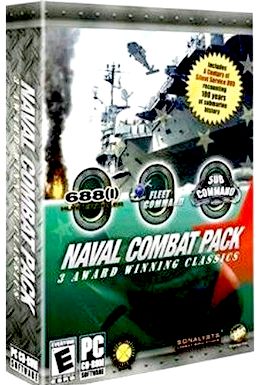
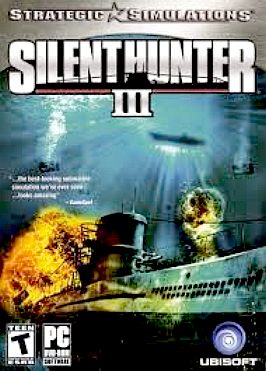
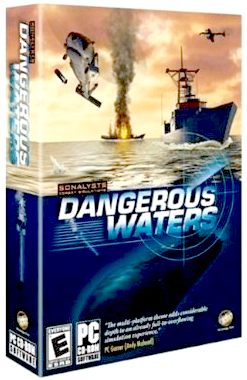
A
few of the most popular computer simulator games where submarines are
the targets to sink, or where you are a submarine commander trying to
sink or evade the enemy.
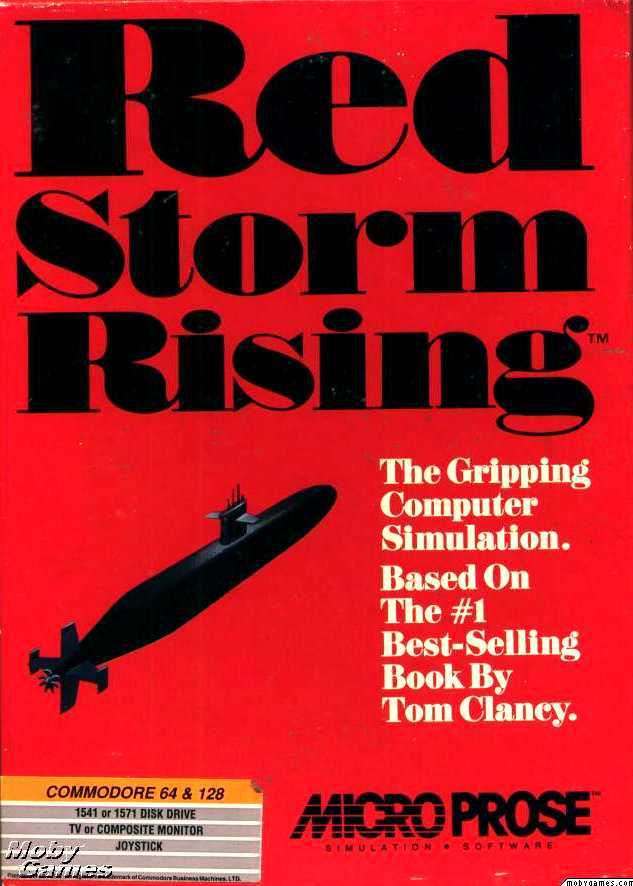

The
novel by Tom Clancy translated into a playable game and is the basis for
another submarine movie, that we just can't get enough of.
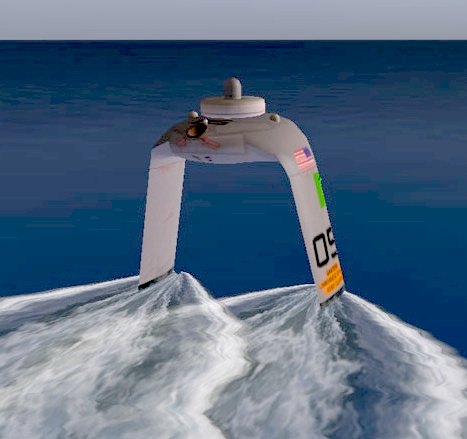
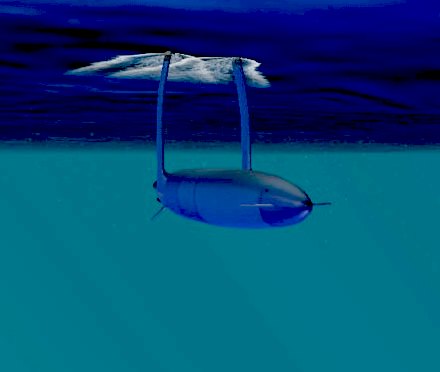
LEFT
- ACTUV-X SHIP as seen on the surface. RIGHT - ACTUV-X SHIP
as seen below the surface.
The Anti-submarine warfare Continuous Trail Unmanned Vessel (ACTUV) project is intended to produce "an X-ship founded on the assumption that no person steps aboard at any point in its operating cycle". The
un-crewed frigate would have enough range and endurance for "global, months long deployments with no underway human maintenance", being able to cross oceans and fight its battles largely without any human input - communications back to base would be "intermittent", according to DARPA.
The ACTUV X-ship has taken on a bit more shape since it was first announced. The vessels themselves are envisioned as being designed for
sea-keeping qualities rather than easy maintenance or the needs of a human crew, and as such would cruise with their main hull submerged below the surface. The only part of an ACTUV showing above the waves would be an arch-shaped combo engine-intake/funnel unit, which would also act as a mast for communications and above-water sensors such as radar.
The guts of the submerged pod-hull would be much the same as one finds in a normal frigate: diesel and gas-turbine prime movers driving props via an electric transmission, fuel tanks, sonar for searching underwater. None of this requires much innovation.
What does require innovation - at least in the perception of those in charge of the project - is the development of a sophisticated set of AI algorithms to handle the ACTUV without any major help from human operators or fleet commanders. One of the contractors to win an ACTUV development deal thus far is sonar-analysis-cum-games-developer-and-audio-studio firm Sonalysts - perhaps most famous for producing submarine-warfare games such as 688 Hunter/Killer and Fleet
Command.
Unsurprisingly, then, it has been decided that the best way to hammer out a set of tactics for ACTUVs is to develop a game-style simulation pitting ACTUV against submarine and get people to play it - so
crowd-sourcing the methods and tactical principles that will then be coded into the robo-frigates' AIs.
The new game - from which these visuals are drawn - is called ACTUV Tactics. The game engine is used in various military sims and in the Dangerous Waters commercial release of 2005. It can be downloaded free in zip format here (323MB). In it, a player tries to find and track an enemy submarine while avoiding collisions with commercial vessels and the like. Various different proposed models of ACTUV robo-frigate are available: Gator, Remora, Seahorse, Shark and Triton. Scores can be uploaded to rankings leaderboards.
LEIDOS
CONTACTS
Corporate
HQ
Leidos, Inc.
11951 Freedom Drive
Reston, VA 20190
(571) 526-6000
BRANDON, SUFFOLK
48TH MED GROUP-LEIDOS/SGSI
BLDG 922, RM 237 BRADFORD RD
RAF LAKENHEATH
BRANDON, SUFFOLK, UNITED KINGDOM IP27 9PN
LAKENHEATH HIGH SCHOOL
BOX 45, RAF LAKENHEATH
BRANDON, SUFFOLK, UNITED KINGDOM IP27 9PN
LEIDOS CLOUDSHIELD UK, LTD.
WHITEFRIARS, LEWINS MEAD
BRISTOL, UNITED KINGDOM BS1 2NT
LEIDOS LIMITED
UNIT G8 STIRLING HOUSE
DENNY END ROAD, WATERBEACH
CAMBRIDGE, UNITED KINGDOM CB25 9QE





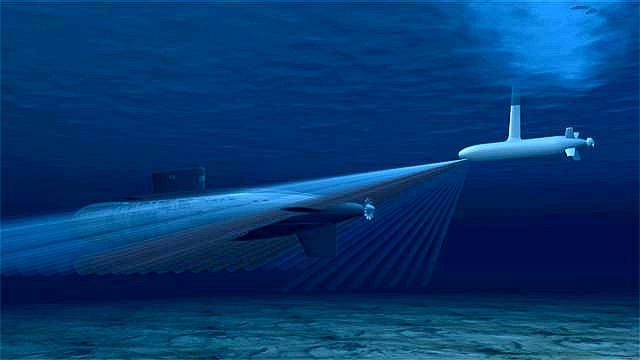
DARPA
HISTORY
The Defense Advanced Research Projects Agency (DARPA) is an agency of the
United States Department of Defense responsible for the development of new technologies for use by the military. DARPA has been responsible for funding the development of many technologies which have had a major effect on the world, including computer networking, as well as NLS, which was both the first hypertext system, and an important precursor to the contemporary ubiquitous graphical user interface.
DARPA began as the Advanced Research Projects Agency (ARPA) created in 1958 by President Dwight D. Eisenhower for the purpose of forming and executing research and development projects to expand the frontiers of technology and science and able
to reach far beyond immediate military
requirements. The administration was responding to the Soviet launching of Sputnik 1 in 1957, and ARPA's mission was to ensure U.S. military technology be more
sophisticated than that of the nation's potential enemies. From DARPA's own introduction,
DARPA’s original mission, established in 1958, was to prevent technological surprise like the launch of Sputnik, which signaled that the
Soviets had beaten the U.S. into space. The mission statement has evolved over time. Today, DARPA’s mission is still to prevent technological surprise to the US, but also to create technological surprise for our enemies.
ARPA, was renamed to "DARPA" (for Defense) in March 1972, then renamed "ARPA" in February 1993, and then renamed "DARPA" again in March 1996.
DARPA is independent from other more conventional military research and development and reports directly to senior Department of Defense management. DARPA has around 240 personnel (about 140 technical) directly managing a $2.8
billion budget. These figures are "on average" since DARPA focuses on short-term (two to four year) projects run by small, purpose-built teams.
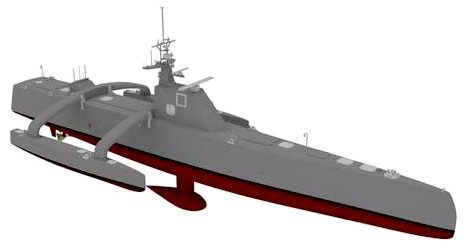
DARPA
CONTACTS
Defense Advanced Research Projects Agency
675 North Randolph Street
Arlington, VA 22203-2114
Tel: (703) 526-6630
LINKS
http://www.darpa.mil/default.aspx
Naval
Today 2014 leidos-starts-building-actuv
Daily
Mail The-stealth-drone-boat-set-hunt-pirates-undercover-world DARPA-approves-construction-ACTUV-anti-submarine-warfare-vessel Gizmag
Leidos ACTUV DARPA The
Register 2011 ACTUV_command_game http://www.theregister.co.uk/2011/04/07/actuv_command_game/ http://www.gizmag.com/leidos-actuv-darpa/32896/ http://www.militaryaerospace.com/articles/2013/07/darpa-uuv-mothership.html
http://nosint.blogspot.co.uk/2013/07/darpa-considers-unmanned-submersible.html
Darpa-hydra-unmanned-submarine-to-deploy-drones
http://en.wikipedia.org/wiki/DARPA
http://www.darpa.mil/
http://www.science.mod.uk/Engagement/the_portal.aspx http://www.science.mod.uk/Engagement/enterprise.aspx https://www.dstl.gov.uk/centrefordefenceenterprise https://www.dstl.gov.uk
UKHO
http://www.maritimejournal.com/news101/industry-news/ukho-appoints-new-national-hydrographer http://www.ths.org.uk
US
Department of Navy Research, development & Acquisition - http://acquisition.navy.mil/ US
Fleet Forces Command - http://www.cffc.navy.mil/
US
http://www.msc.navy.mil/
http://www.youtube.com/watch?v=3uRTBQqEw8A
http://www.youtube.com/watch?v=zfmCvduacqU
http://spy-drones.com/2014/08/20/russian-navy-will-have-robots-manning-new-submarines/
http://www.youtube.com/watch?v=g-Ak9tFWClI#t=1156
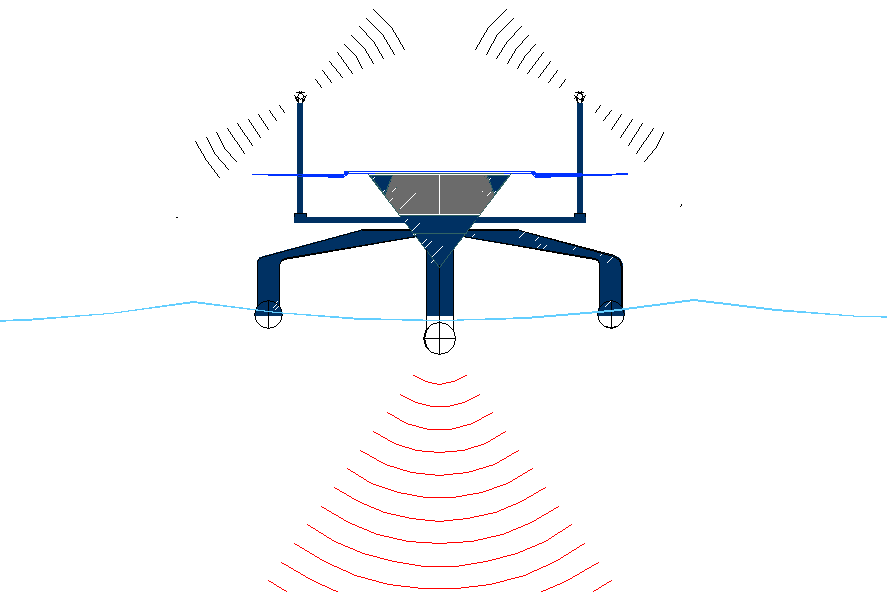
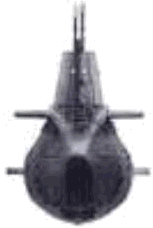
SCORPION
HK DRONE - If the submerged nuclear submarine shown above has a crew on board (most
likely) they are in grave danger, because the submarine hunter-killer (HK)
on the surface above it is an unmanned drone that can either track the
unfortunate submarine and pass information to
a network of marine drones, or, in times of hostilities - sink the steel
coffin as soon as it is located with torpedoes or
the modern equivalent of depth charges.
Take
away the invisibility of a submarine and what use are they? The Scorpion
HK is an unmanned, autonomous vessel concept with virtually unlimited
range, being fueled by energy from nature. The old wolfpack
tactics may now be used against the submarine in role reversal with this
modern destroyer.
|













